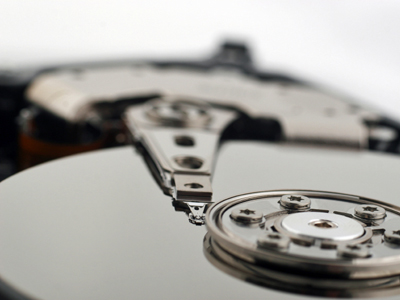Businesses, more so than ever in today’s information-heavy age, are having to store ridiculously large amounts of data. But where’s the best place to store what can often be terabyte upon terabyte of data?
The traditional, tried and tested route to go down is the good old fashioned mechanical hard disk drive, or HDD. The HDD, which works by recording data to magnetic platters via read/write heads, has been around for decades, and it’s easy to see why the storage format has stood the test of time. The hard disk drive is incredibly affordable, and offers businesses an incredibly cost-effective solution; the price-per-gigabyte of data is very low when compared with more modern, solid state formats. What’s more, hard drive capacities are reaching unprecedented levels; last year we wrote about Toshiba’s business-class 14TB hard drive. But the low cost doesn’t come without plenty of negatives a business will need to consider. Firstly, being mechanical, hard disk drives are susceptible to physical damage, like a head crash or motor failure. Both of these faults can leave businesses with a hefty data recovery bill. Nonetheless, hard drive data recovery techniques have come on leaps and bounds in recent years, so it’s getting cheaper to get your data back from a damaged HDD. There’s also the fact that the method in which hard drives read and write data i.e. via spinning disks, creates noise, and also requires more power. These are both considerations a business needs to take into account.
A variation on the hard drive developed in the late 1980s is RAID, or a redundant array of independent disks. RAID arrays combine multiple HDDs into a single unit to improve efficiency, and there are a number of configurations, also known as levels, that a business can employ in order to tailor the format to their needs. RAID 0 is the basic RAID level, and works by combining two or more hard drives into a bigger, faster drive. However, while this can mean businesses can create giant 6TB hard drives, this RAID level increases the chance of data loss. When data is written to a RAID 0 system, it’s striped across all of the drives in the array. So if one drive fails, you’ll need to get that repaired to access your data; the other drives will in effect be useless. RAID 1 is known as disk mirroring, and replicated your data across two or more hard drives. It’s fast in terms of read speeds, because all disks are operational, although write operations are slower due to data having to be written to each drive in the array. Your data is much more protected in a RAID 1 setup over RAID 0 – as long as one drive is operational, you’re good. But the downside is, you only have the capacity of one drive, however many you use, so RAID 1 is favoured by businesses who need high levels of speed and performance. These are the two basic RAID levels, and you can read about the others by checking out our previous post about the different levels of RAID. All in all, RAID is a viable option for businesses, which is why so many utilise it.
Solid state drives, or SSDs, are on the rise – they offer multiple benefits over their mechanical cousins. SSDs don’t contain moving parts like hard drives, so are less susceptible to physical damage, and create less heat and noise, and as a result, are more energy efficient. Rather than storing data on spinning platters, data on SSDs is stored on NAND flash chips, and allow for pretty much instantaneous access of your company’s data. But there must be a downside, right? Well, as it happens there is a pretty big one – cost. Flash storage is incredibly expensive compared to traditional HDD storage, which is why adopting it fully for your business might not be the smartest move. SSDs are much more commonly used by home users, and typically only come in 128GB and 256GB options. A potential option is the solid state hybrid drive (SSHD), which is a hard disk drive containing a small amount of flash storage.
Overall, then, it really depends on your business’ needs. If you need a cheap solution, so with a good old fashioned hard drive setup, or a RAID 0 array. If you’re a larger company with a bit more money, you could opt for a RAID 1 setup, or go all-out flash. You've probably noticed a glaring omission from ths article - cloud storage. Cloud storage is a completely different kettle fo fish, one we'll cover in the future.
